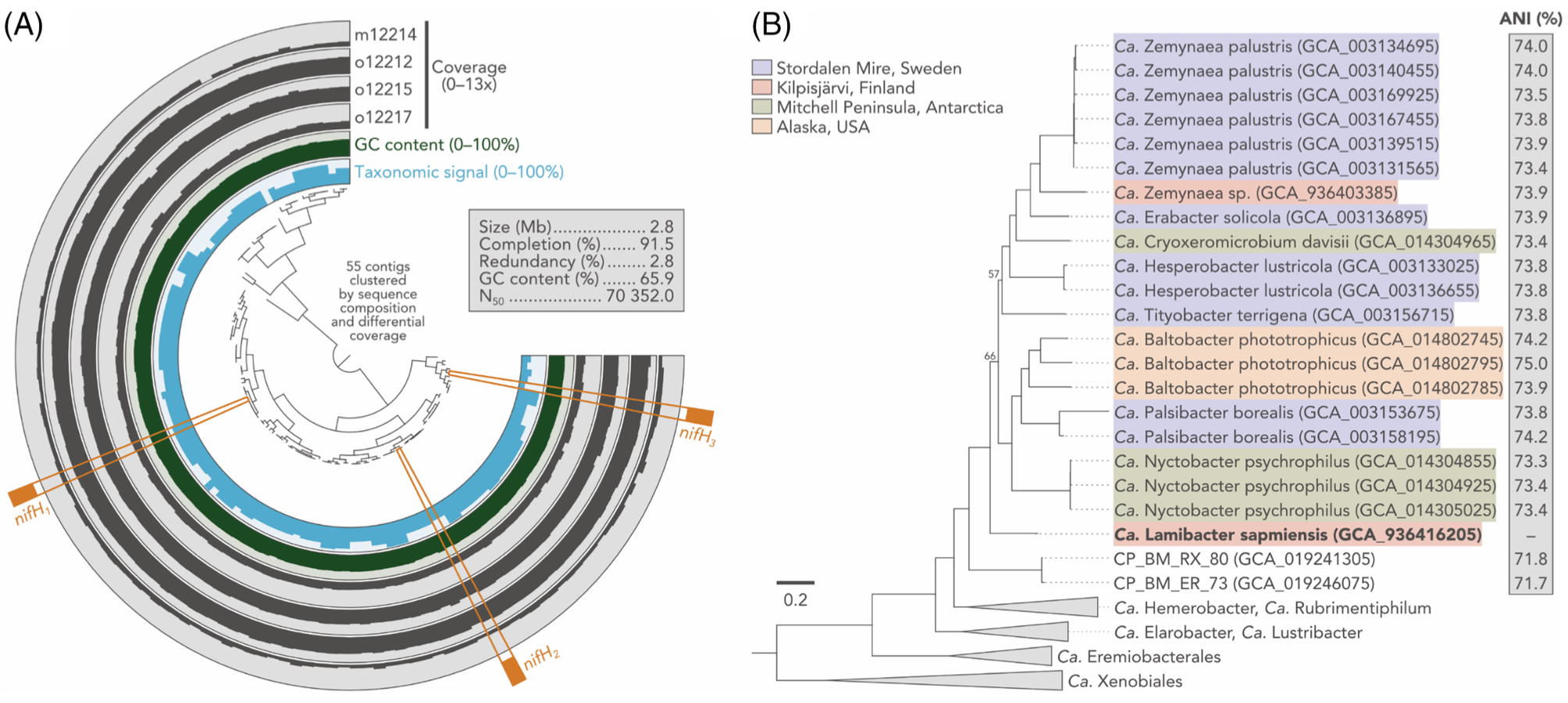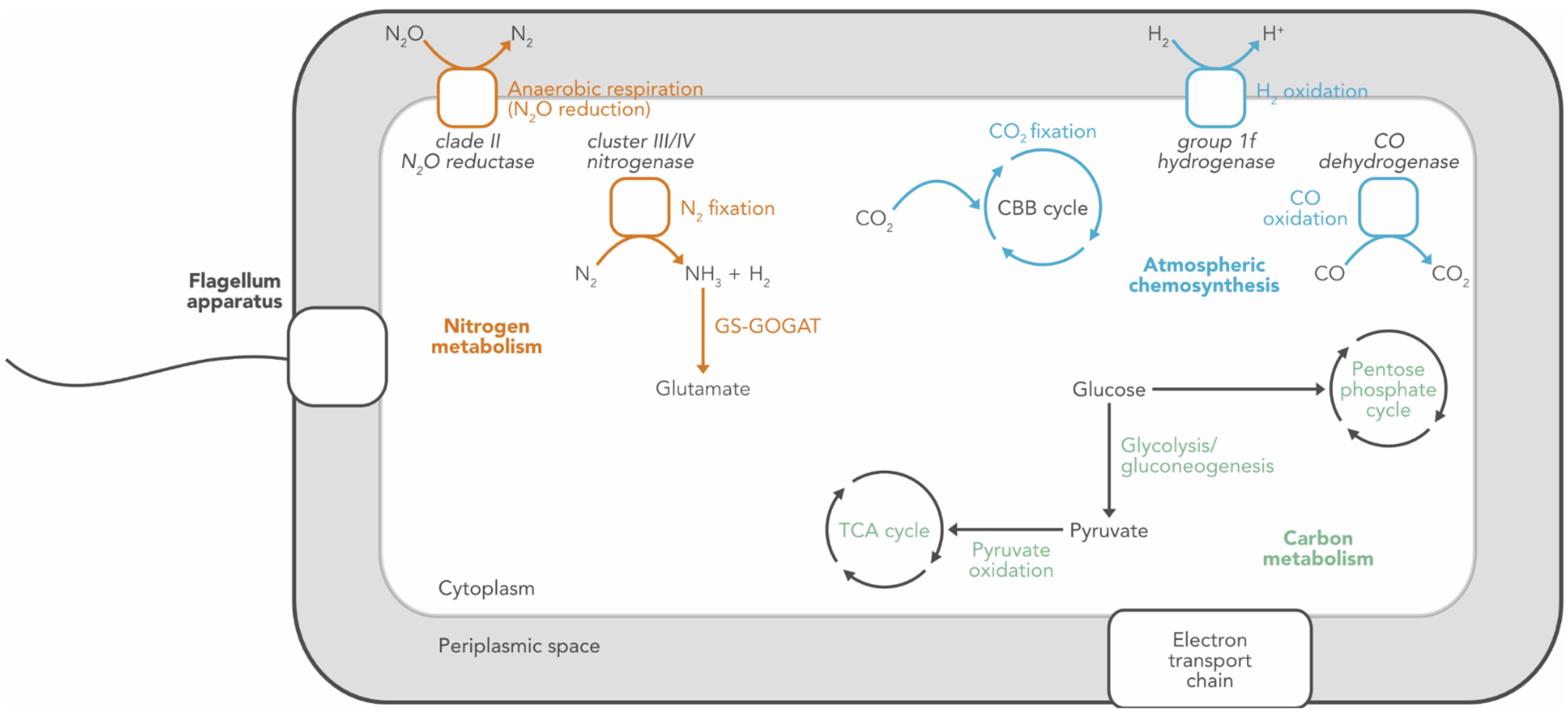Discovery of Eremiobacterota with nifH homologues in tundra soil
Last updated on 21 June 2024
Our study "Discovery of Eremiobacterota with nifH homologues in tundra soil" is now published in Environmental Microbiology Reports. You can find it here.
In this study, we describe the genome of an Eremiobacterota population from tundra soil that contains the minimal set of nif genes needed to fix atmospheric N2. This putative diazotroph population, which we name Candidatus Lamibacter sapmiensis, links for the first time Eremiobacterota and N2 fixation.

The integrity of the genome and its nif genes are well supported by both environmental and taxonomic signals. The putative diazotrophic role of Ca. Lamibacter sapmiensis is supported by the presence of genes that regulate N2 fixation and other genes involved in downstream processes such as ammonia assimilation.

Similar to other Eremiobacterota, Ca. Lamibacter sapmiensis encodes the potential for atmospheric chemosynthesis via CO2 fixation coupled with H2 and CO oxidation. Interestingly, the presence of a N2O reductase indicates that this population could play a role as a N2O sink in tundra soils.

Due to the lack of activity data, it remains uncertain if Ca. Lamibacter sapmiensis is able to assemble a functional nitrogenase and participate in N2 fixation. Confirmation of this ability would be a testament to the great metabolic versatility of Eremiobacterota, which appears to underlie their ecological success in cold and oligotrophic environments.
All data and code used in this study can be found here.